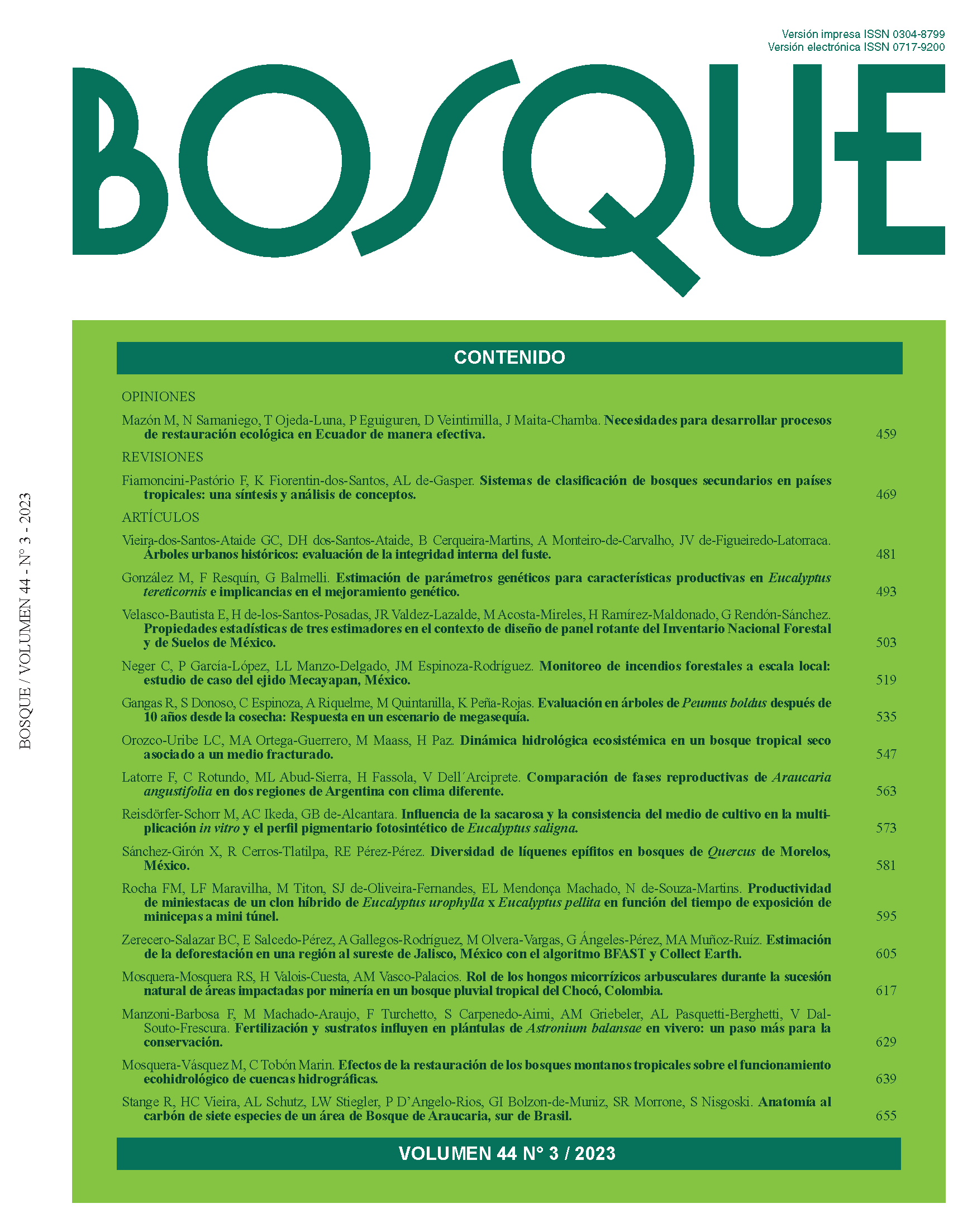Comparison of Araucaria angustifolia reproductive phases in two regions of Argentina with different climate conditions
Main Article Content
Abstract
The reproductive cycle of Araucaria angustifolia, a critically endangered species due to the reduction of its original habitat and the lack of natural regeneration, has been studied. The scarcity of seeds in its distribution area makes reforestation a challenging restoration tool. This work analyses the influence of climate on pollen and seed production. Aerobiological monitoring and seed collection were performed during the 2015-2017 reproductive period in two regions of Argentina: San Antonio (SA), Misiones, a subtropical site; and 25 de Mayo (25M), Buenos Aires, a temperate area. The seasonality of pollination was similar between the sites (spring). However, the pollen amount was four times higher in 25M, with high hourly values throughout the day, and a shorter duration of about half the number of days compared to SA. Seed production was also higher in 25M (six fold). Reproduction proved to be favoured by the temperate climate due to higher summer temperatures prior to pollination (period of strobili initiation), lower winter temperatures (during pollen grain formation), and lower rainfall during pollen transport. Management guidelines involving ex-situ conservation of this native forest species are proposed.

